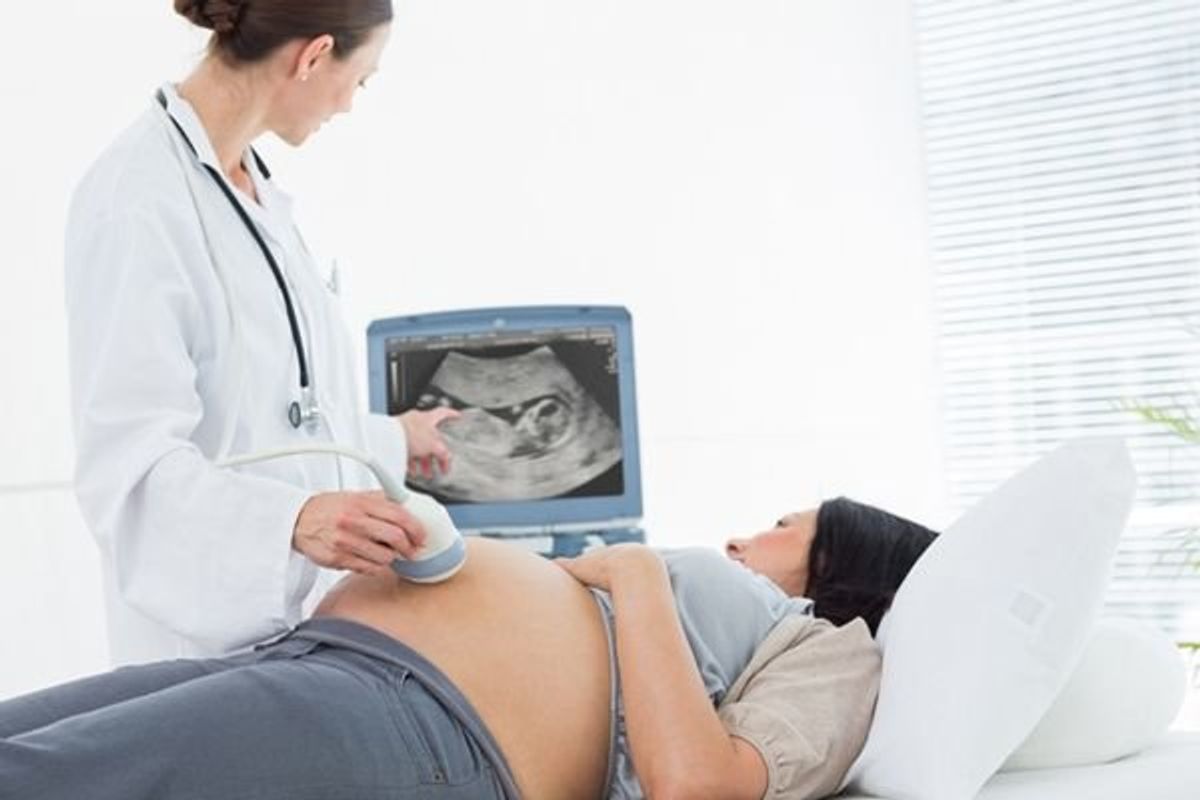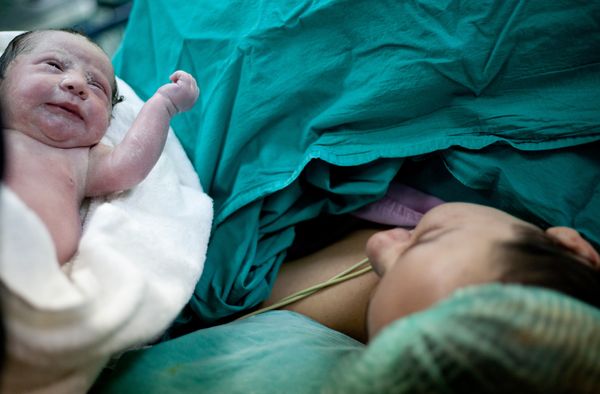Findings run counter to commonly held belief that induction actually raises a woman's odds for cesarean
MONDAY, April 28, 2014 (HealthDay News) -- Pregnant women whose labor is induced are 12 percent less likely to need a cesarean delivery than those whose doctors take a "wait-and-see" approach, a new review of the data shows.
The findings challenge the widely held view that inducing labor actually boosts the odds that a woman will require a C-section, the authors said.
"These findings show that induction is a way to increase the likelihood of a vaginal birth," wrote a team led by Khalid Khan of Queen Mary University of London in England.
In the study, Khan's group analyzed 157 studies involving more than 31,000 births. The 12 percent lower risk of cesarean delivery was seen in term or post-term pregnancies that were induced, but not in preterm births, the authors noted.
Inducing labor lowered the chance of cesarean delivery in both high- and low-risk pregnancies, and it also reduced the risk of fetal death and complications in mothers, the findings showed.
The researchers also found that the drug prostaglandin E2 -- widely used in the United States, Canada and the United Kingdom to induce labor -- was linked to a reduced risk of cesarean delivery. However, use of the hormone oxytocin, and amniotomy (the deliberate rupture of the amniotic sac) -- also widely used to induce labor -- did not lower the chance of C-section.
According to background information from the researchers, labor is induced in about 20 percent of all births, for a number of reasons. But even though prior research has shown that inducing labor cuts the risk of cesarean delivery, many people still believe the opposite.
The review offers "a robust answer to the disputed question of risk of cesarean delivery associated with induction of labor," Khan and colleagues concluded. They believe the findings may help doctors decide who should be induced and explain to patients the benefits and risks of inducing labor.
Experts were divided on the merits of the new study.
Dr. Joanne Stone, director of maternal-fetal medicine at The Mount Sinai Hospital in New York City, called the research "extremely important."
She said that most of the studies that have found higher rates of C-section in women who have undergone induced labor have compared those patients to women undergoing spontaneous (un-induced) labor -- many of whom had widely varying risk factors.
But Khan's study compared women whose pregnancies were induced against women with similar pregnancy risk profiles -- fetal size, time of gestation, and other factors -- who were not necessarily recommended for induction. That makes for a more accurate patient-to-patient comparison, Stone said.
However, Dr. Catherine Herway, assistant director of maternal-fetal medicine at Staten Island University Hospital in New York City, believes the study has flaws.
"The validity of this finding comes into question, as outcomes were lumped together from clinical scenarios covering a potentially wide range of obstetrical management," she said.
"Data was compiled from studies done spanning the years of 1975 to 2010, pregnancies from 37 to 42 weeks gestation, and from medically indicated as well as elective inductions. Thus, caution should be used when interpreting the results of this study," Herway stated.
The study was published April 28 in the CMAJ (Canadian Medical Association Journal).
SOURCES: Joanne Stone, M.D., director of maternal-fetal medicine, The Mount Sinai Hospital, New York City; Catherine Herway, M.D., assistant director of maternal-fetal medicine, Staten Island University Hospital, New York City; CMAJ (Canadian Medical Association Journal), news release, April 28, 2014







